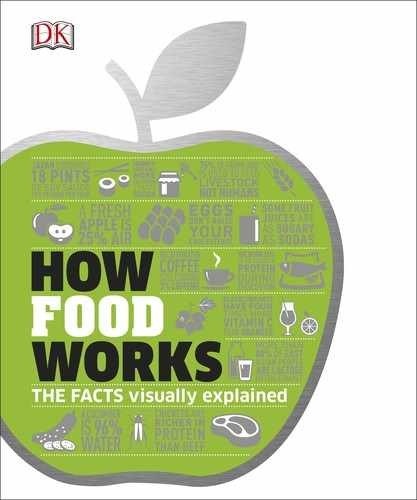
FOOD AND ENVIRONMENT
Overfishing and sustainable fishing
1950 1960 1970
Overfishing and
sustainable fishing
Fish are more popular than ever, partly due to the increasing
awareness of their health benefits. But the world’s insatiable appetite
has almost drained the once apparently limitless resources of the
ocean—often with catastrophic results to ecosystems. Fish farming
and sustainable fishing may provide solutions to these problems.
Global hunger for fish
Around three billion people in the world, in order to obtain enough
protein, rely on either wild-caught or farmed seafood, including
fish. On average, each person eats four times as much seafood now
than they did in 1950. To satisfy this great demand, global fisheries
have already been pushed past their limits. When fish stocks
(populations) fall steadily, they are being overfished—and this is
unsustainable because these fish will, sooner or later, become too
scarce to support a fishery—or worse, become extinct entirely.
The United Nations Food and Agriculture Organization (UNFAO)
says we will need another 40 million tons (36.3 million metric tons)
of seafood worldwide per year by 2030 just to meet current
consumption rates, based on current population projections.
A rise in fishing
Since the 1950s, global fishing of wild
populations (wild fisheries) has been rapidly
increasing, along with aquaculture (fish farming).
By the 1990s, fishing plateaued as fish stocks
became depleted. In response, fish farming grew
even more rapidly—and continues to grow.
IS IT OK TO
EAT TUNA?
The once-abundant bluefin
tuna is now critically endangered,
and many other tuna species
are decimated. They are large
predators, and so like big cats or
birds of prey, they are naturally
scarce—so we can’t eat them
too much or too fast.
PERCENT OF FISH
STOCKS ARE EITHER FULLY
EXPLOITED OR OVERFISHED
KEY
Fish farming
Wild fisheries
84
YEAR
US_244-245_Overfishing_sustainable_fishing.indd 244 18/01/2017 09:49
244
FOOD AND ENVIRONMENT
Overfishing and sustainable fishing
245
GLOBAL FISH LANDINGS IN MILLION TONS
1990 2000 2010
160
140
120
100
80
60
40
20
One of the most dramatic instances
of a fishery collapse was the Grand
Banks cod fishery off Newfoundland.
Cod were once so plentiful in the
area that it was possible to scoop
them out of the sea with a basket.
The implementation of factory ships
in the 1960s caused a massive spike
in catches, but they quickly declined
and fell completely in the 1990s.
Recovery is slow because cod fry are
quickly eaten by predators. Adult cod
would normally eat the predators
of the fry, but since they are absent
very few cod ever grow up.
YEAR
1900 1925 1950 1975 2000
COLLAPSE OF ATLANTIC COD STOCK
0
180
360
540
725
Factory ships
cause spike in
cod catches
Canada
suspends
cod fishing
in the
region in
1992
FISH LANDINGS IN THOUSAND TONS
How to fish sustainably
Sustainable fishing preserves fish
populations and allows them to
replenish themselves. It involves a
mixture of good practice, such as:
no-catch areas, where fishing is
illegal; no bottom-trawling, to
avoid damaging fragile ecosystems
such as reefs; preventing fraud, in
which fishers misreport catches;
reducing bycatch by using nets
that allow fry and other
accidentally caught species
to escape; buying other species
of fish that are not overfished;
and fishing using a line and
pole, which targets individual
fish rather than entire schools.
Are fish farms the solution?
Fish farming involves raising fish and other
seafood in captivity, usually in giant ponds
or netted enclosures. Whether fish farming
is sustainable or not depends on whether
the fishmeal they are fed was sustainably
fished itself.
NO-CATCH AREAS NO BOTTOM TRAWLING PREVENTING FRAUD
REDUCE BYCATCH SUBSTITUTION OF STOCKS
LINE-AND-POLE
US_244-245_Overfishing_sustainable_fishing.indd 245 18/01/2017 09:49

244
FOOD AND ENVIRONMENT
Overfishing and sustainable fishing
245
GLOBAL FISH LANDINGS IN MILLION TONS
1990 2000 2010
160
140
120
100
80
60
40
20
One of the most dramatic instances
of a fishery collapse was the Grand
Banks cod fishery off Newfoundland.
Cod were once so plentiful in the
area that it was possible to scoop
them out of the sea with a basket.
The implementation of factory ships
in the 1960s caused a massive spike
in catches, but they quickly declined
and fell completely in the 1990s.
Recovery is slow because cod fry are
quickly eaten by predators. Adult cod
would normally eat the predators
of the fry, but since they are absent
very few cod ever grow up.
YEAR
1900 1925 1950 1975 2000
COLLAPSE OF ATLANTIC COD STOCK
0
180
360
540
725
Factory ships
cause spike in
cod catches
Canada
suspends
cod fishing
in the
region in
1992
FISH LANDINGS IN THOUSAND TONS
How to fish sustainably
Sustainable fishing preserves fish
populations and allows them to
replenish themselves. It involves a
mixture of good practice, such as:
no-catch areas, where fishing is
illegal; no bottom-trawling, to
avoid damaging fragile ecosystems
such as reefs; preventing fraud, in
which fishers misreport catches;
reducing bycatch by using nets
that allow fry and other
accidentally caught species
to escape; buying other species
of fish that are not overfished;
and fishing using a line and
pole, which targets individual
fish rather than entire schools.
Are fish farms the solution?
Fish farming involves raising fish and other
seafood in captivity, usually in giant ponds
or netted enclosures. Whether fish farming
is sustainable or not depends on whether
the fishmeal they are fed was sustainably
fished itself.
NO-CATCH AREAS NO BOTTOM TRAWLING PREVENTING FRAUD
REDUCE BYCATCH SUBSTITUTION OF STOCKS
LINE-AND-POLE
US_244-245_Overfishing_sustainable_fishing.indd 245 18/01/2017 09:49
..................Content has been hidden....................
You can't read the all page of ebook, please click here login for view all page.
